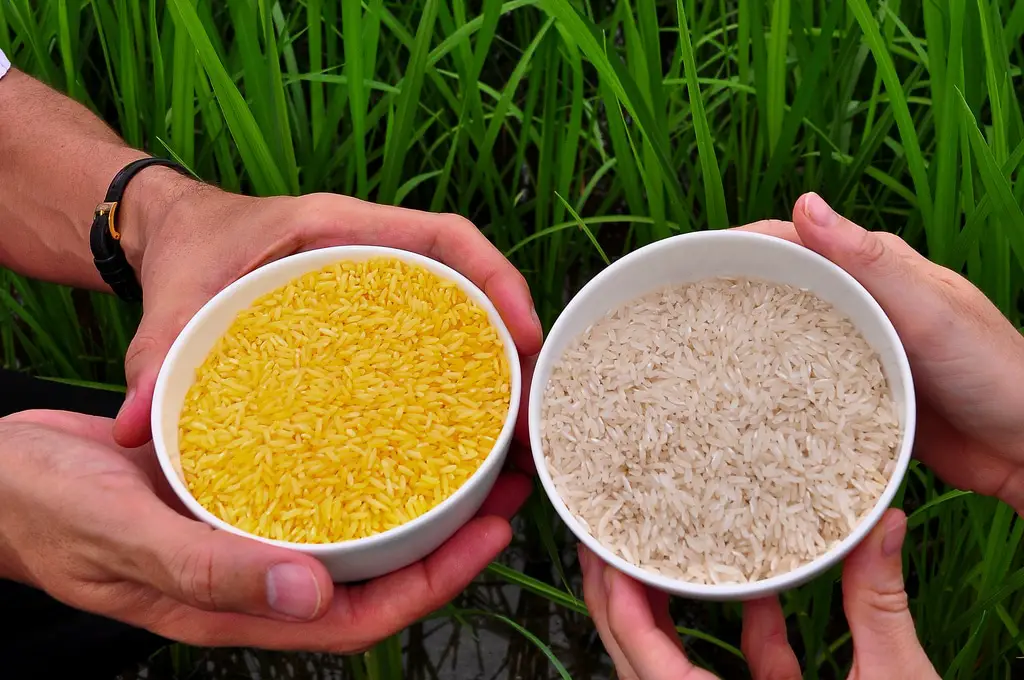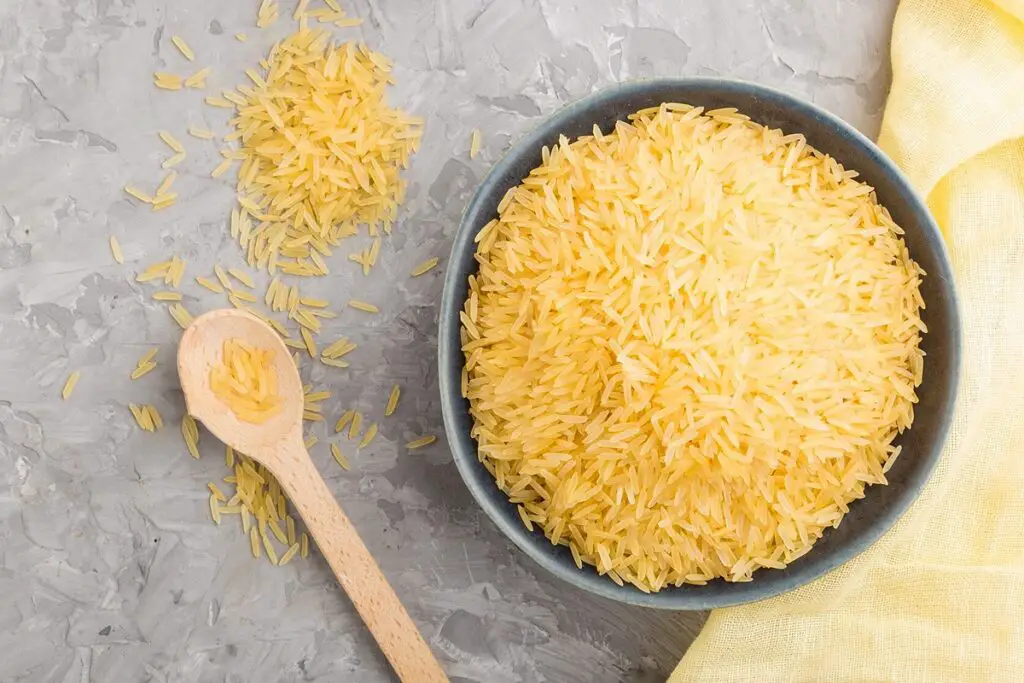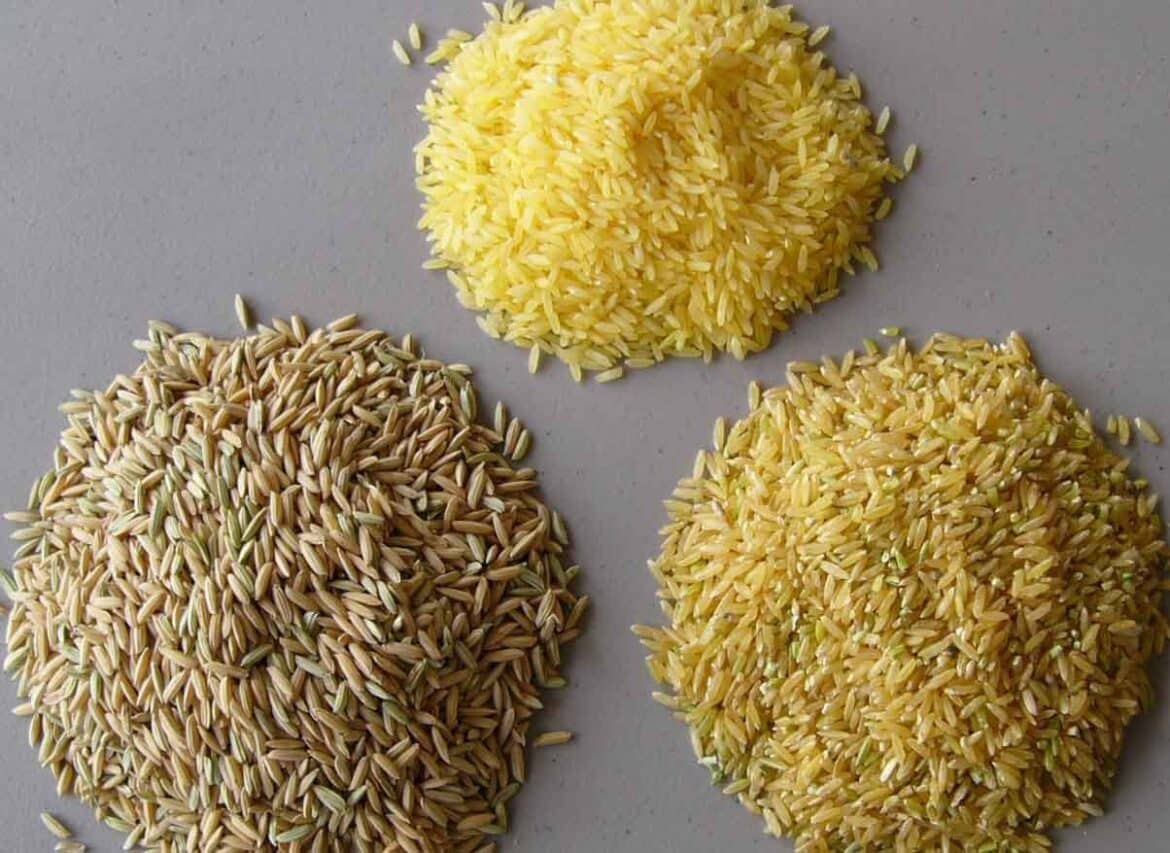Introduction
Is Yellow Rice Good For Weight Loss: Yellow rice, often referred to as saffron rice or turmeric rice, is a delightful dish primarily composed of rice seasoned with a blend of spices and herbs, most notably turmeric. Turmeric, a bright yellow spice derived from the root of the Curcuma longa plant, is celebrated for its potential health benefits. Its active compound, curcumin, has been linked to various positive effects, including anti-inflammatory properties and potential support for weight management.
The claim that yellow rice might aid in weight loss is rooted in several factors. First and foremost, the presence of turmeric in the dish has been associated with a boost in metabolism, which can potentially contribute to burning calories more efficiently. Additionally, curcumin is believed to have an impact on fat cells, potentially reducing their growth and accumulation.
Yellow rice is often prepared using ingredients like vegetables, lean proteins, and healthy fats, which can make it a well-balanced meal option that supports weight loss. These ingredients provide essential nutrients, fiber, and satiety, helping individuals feel full and satisfied, which can lead to reduced calorie consumption throughout the day. To approach the idea of yellow rice as a weight loss tool with a balanced perspective. While it may offer potential benefits, it should not be relied upon as a sole solution for weight loss. Like any dietary choice, portion control, overall calorie intake, and a well-rounded diet remain crucial elements of a successful weight management strategy.

Is yellow rice good for diet?
Because of the turmeric, yellow rice provides anti-inflammatory benefits. Additionally, it contains riboflavin, niacin, vitamin B6, and folate. Plus, you’ll find that yellow rice has minerals such as magnesium, calcium, iron, zinc, and potassium.
Carbohydrates: Yellow rice is primarily composed of carbohydrates, which provide a quick source of energy. This can be advantageous for individuals who engage in regular physical activity.
Spices: Turmeric, saffron, and annatto are used in yellow rice, and they offer potential health benefits. Turmeric contains curcumin, a compound known for its anti-inflammatory properties, while saffron is rich in antioxidants.
Fiber: Depending on the type of rice used, yellow rice can contain varying amounts of dietary fiber. Brown or whole-grain rice varieties are higher in fiber than white rice, providing a feeling of fullness and supporting digestive health.
Protein: Yellow rice itself contains minimal protein, Pair it with protein-rich foods like lean meats, beans, or tofu to create a balanced meal.
Vitamins and Minerals: Yellow rice may contain essential vitamins and minerals depending on its preparation. For example, it can be a source of B vitamins, potassium, and iron.
What color rice is better for weight loss?
Brown rice
Brown rice is the most recommended variety for those hoping to lose weight. Loaded with dietary fibre, brown rice boosts metabolism and has 111 calories for every 100 grams.
White Rice:White rice is the most commonly consumed rice variety worldwide. It has had the bran and germ layers removed during processing, which results in a polished, white appearance. While white rice is a good source of carbohydrates, it is relatively low in fiber and nutrients compared to other rice types.
Brown Rice:Brown rice is a whole-grain rice variety that retains the bran and germ layers, giving it a brown color and a nuttier flavor. It is considered a healthier option compared to white rice.
Red Rice:Red rice, often referred to as Camargue rice, gets its name from its distinctive reddish-brown color. Like brown rice, it is a whole-grain rice variety that retains the bran and germ layers.
Black Rice:Black rice, also known as forbidden rice, is a deep-purple to black grain that is prized for its health benefits and unique flavor.
Is yellow rice low in fat?
Nutrition. Both white rice and yellow rice are not wholegrain, which means that the most nutritious part, the brown outer layer, has been removed. Both are a good source of carbohydrates and are low in fat.
Type of Rice: The type of rice used plays a significant role in determining the fat content. Brown rice, for instance, contains slightly more fat than white rice due to the presence of the bran layer.
Cooking Method: The cooking method you choose can also impact the fat content. Boiling or steaming rice without added fats will keep it low in fat, while cooking it in butter, oil, or coconut milk can significantly increase its fat content.
Additional Ingredients: The fat content can be further influenced by any additional ingredients or toppings added to the yellow rice. For example, if you serve yellow rice with fried or sautéed vegetables or meats, this will contribute to the overall fat content of the dish.
Is Yellow Rice Low in Fat:In general, when prepared with minimal added fats or oils and using white rice, yellow rice can be considered a relatively low-fat food. The spices used in yellow rice, such as turmeric and saffron, themselves contain negligible amounts of fat. However, it’s essential to be mindful of how the rice is prepared and what ingredients are used in conjunction with it.
Is Yellow Rice high in fat?
Yellow rice is about 8 percent protein and 2 percent fat, primarily from omega-6 fatty acids which is considered pro-inflammatory.
Type of Rice: The type of rice used significantly affects the fat content. Brown rice, for instance, contains slightly more fat than white rice due to the presence of the bran layer.
Cooking Method: The cooking method you choose plays a crucial role in determining the fat content. Boiling or steaming rice without added fats will keep it low in fat. However, if you cook it with butter, oil, or coconut milk, the fat content will increase substantially.
Additional Ingredients: The fat content can be further influenced by any additional ingredients or toppings added to the yellow rice. If you serve yellow rice with fried or sautéed vegetables or meats, this can significantly contribute to the overall fat content of the dish.
Is Yellow Rice High in Fat:In its basic form, yellow rice can be considered a relatively low-fat food, especially when prepared with minimal added fats or oils and using white rice. The spices used in yellow rice, such as turmeric and saffron, themselves contain negligible amounts of fat.
It is essential to be mindful of how the rice is prepared and what ingredients are used in conjunction with it. If the preparation involves substantial amounts of added fats or if it’s paired with high-fat proteins or sauces, the overall fat content of the dish can increase significantly.
Should I leave rice for weight loss?
While Riya Desai, Senior Dietitian, Wockhardt Hospitals, Mira Road agreed that giving up rice completely for a month might result in some amount of weight loss but only if the rice is not replaced with another cereal and the calories and total amount of carbohydrates are restricted in the diet.
Caloric Intake: Weight loss ultimately boils down to consuming fewer calories than you burn. Rice, regardless of its type, contains calories. It’s crucial to be mindful of portion sizes and calorie intake when incorporating rice into your diet.
Type of Rice: Different types of rice offer varying nutritional benefits. Brown rice, for instance, is higher in fiber and nutrients compared to white rice, making it a more nutritious choice for weight loss.
Portion Control: One of the main concerns with rice consumption is portion control. Large servings of rice can lead to excessive calorie intake. Measuring portions and being mindful of portion sizes is essential.
Preparation Methods: The way rice is prepared can significantly affect its impact on your weight loss journey. Boiling or steaming rice without added fats is a healthier choice than frying or cooking it with butter or oil.
Balanced Diet: Rice should be viewed as part of a balanced diet. Pairing it with lean protein sources, plenty of vegetables, and healthy fats can create a well-rounded meal that supports weight loss.
Is Yellow Rice high in cholesterol?
Although rice does not contain cholesterol, it can affect the body in a way that may raise someone’s cholesterol levels or triglycerides.
Portion Control: Pay attention to portion sizes when consuming yellow rice or any dish. Overeating, even of cholesterol-free foods, can contribute to weight gain, which may affect cholesterol levels.
Healthy Pairings: Pair yellow rice with lean protein sources like grilled chicken, fish, tofu, or legumes and plenty of vegetables to create a balanced and heart-healthy meal.
Cooking Methods: Choose cooking methods that minimize the use of unhealthy fats and oils. Boiling or steaming rice and using minimal added fats can help maintain a heart-healthy diet.
Limit Saturated and Trans Fats: Be mindful of ingredients that are high in saturated and trans fats, as these can have a more significant impact on cholesterol levels than dietary cholesterol itself.
Is Yellow Rice full of carbs?
Knorr Yellow Rice (1 cup) contains 50g total carbs, 48g net carbs, 1g fat, 6g protein, and 280 calories.
White Rice: White rice, the most commonly used variety in yellow rice recipes, contains primarily carbohydrates. A 1-cup serving of cooked white rice typically provides around 45 grams of carbohydrates.
Brown Rice: Brown rice, a whole-grain alternative to white rice, is higher in fiber and retains more nutrients. A 1-cup serving of cooked brown rice generally contains about 45 grams of carbohydrates.
Spices and Seasonings: The spices and seasonings used in yellow rice, such as turmeric, saffron, or annatto, contain negligible carbohydrates, so they don’t significantly impact the overall carbohydrate content of the dish.
Carbohydrates in a Balanced Diet:Carbohydrates are an essential part of a balanced diet, providing the body with energy to fuel its daily activities and functions. However, the type and quality of carbohydrates you consume are crucial.
Complex carbohydrates, like those found in whole grains such as brown rice, provide more sustained energy and are generally healthier choices than simple carbohydrates like sugars and highly processed foods.
It’s essential to consider the overall composition of your meal when enjoying yellow rice. Pairing it with lean protein sources, plenty of vegetables, and healthy fats can create a well-rounded and nutritious meal that helps maintain steady blood sugar levels and supports overall health.
What is Yellow Rice made of?
It is made using white rice made yellow with annatto, saffron or turmeric, ingredients used to give the rice its yellow color.
Sautéing Aromatics: To start, aromatics like onions and garlic are sautéed in a bit of oil until they become translucent. This step helps release their flavors and creates a fragrant base for the rice.
Spices and Seasonings: The yellowing spices, whether it’s turmeric, saffron, or annatto, are added to the sautéed aromatics. The spices are lightly toasted in the oil, which enhances their flavors and infuses the dish with the desired yellow color.
Rice Addition: Once the spices are incorporated, the rice is added to the pot. It is briefly cooked alongside the spices and aromatics to absorb their flavors.
Cooking Liquid: Water or broth is then added to the pot, and the mixture is brought to a boil. The rice is simmered until it absorbs the liquid and becomes tender.
Fluffing and Serving: After the rice is cooked, it is fluffed with a fork to separate the grains and release any excess steam. It is then ready to be served as a colorful and aromatic side dish or as a base for various main courses.

Conclusion
Yellow rice’s key ingredient, turmeric, contains curcumin, which has shown promise in boosting metabolism and potentially impacting fat cells. These properties suggest that yellow rice may indeed play a supportive role in a weight loss journey. Additionally, when prepared with a variety of nutrient-rich ingredients such as vegetables, lean proteins, and healthy fats, it can offer a balanced meal that promotes satiety and reduces overall calorie consumption.
It is essential to exercise caution and moderation. Relying solely on yellow rice as a magic bullet for weight loss is not advisable. The success of any weight management plan hinges on a holistic approach that encompasses portion control, a well-rounded diet, physical activity, and other lifestyle factors.
Individual responses to yellow rice can vary. Some individuals may benefit from its potential metabolic-boosting properties, while others may not experience significant weight loss benefits. It’s crucial to consult with a healthcare professional or a registered dietitian before making any significant dietary changes, including incorporating yellow rice into your weight loss plan. Yellow rice can be part of a balanced and diverse diet that supports weight loss efforts, provided it is consumed in moderation and as part of an overall healthy eating pattern. When paired with portion control, regular physical activity, and a mindful approach to nutrition, it can contribute positively to your weight management goals.

